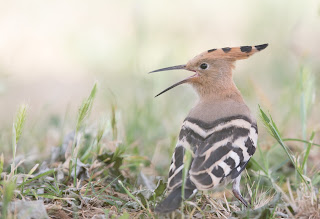Small Pearl-bordered Fritillary: It's that time of year again where the sun is out and the birds are off busy breeding and not migrating so we birders turn our attention to Lepidoptera.
First stop, the very beautiful Arnside Knott, Cumbria.
This is an area of Outstanding Natural Beauty and is generally considered to be the best place for butterflies in northern England.
Arnside Knott is famous for it's Fritillary butterflies which include High Brown, Large Green and Small Pearl-bordered.
Small Pearl-bordered was one of my main target species and I wasn't let down, they were everywhere! One needs a close view of its underside to be sure of identification but the number 730 marking on the upper side can help.
Northern Brown Argus: My second stop was Warton Crag. This is a nationally important area of limestone habitat including grassland, woodland and limestone pavement.
Warton Crag boasts supporting some of Britain’s rarest butterflies, including Peal Bordered Fritillary and High Brown Fritillary, as well as an array of other rare invertebrates and plants.
One of it's top butterflies is the Northern Brown Argus and I was keen to get my first look, so waited around the limestone pavement areas in the heat of the day.
I was about to give in as I was melting before a single butterfly flew right past me, landed only for a moment, then took off again not to be seen.
Brilliant!
Hummingbird Hawkmoth: On my descent down the limestone pavement a Hummingbird Hawkmoth caught my eye.
These incredible moths beat their wings at such speed they emit an audible hum. Their name is further derived from their similar feeding patterns to hummingbirds.
Large Skipper: Both Warton and Arnside had good numbers of Large Skippers, which were much more amiable then the other smaller butterflies which never stood still for long!
Chimney Sweeper Moth: I was surprised to come across the Small Blue Butterfly as I thought they were localised to the Northern Highlands and the South of England.
However my excitement didn't last long as the flutterby showed me its under wing and unlike the spotted pale blue of the Small Blue I saw the dark under wings of a day time flying moth called the Chimney Sweeper Moth.
These are typical day time flying moths which like limestone habitats.
Small Heath: This is the smallest of our 'browns' and is closer in size to a skipper, or Common Blue than it's relatives, such as the Meadow Brown. However, it's fluttering flight is quite different from that of the skippers and blues and is relatively easy to identify in the field. These too were abundant on both Arnside and Warton.
 Marsh Helleborine: This stunning and somewhat inconspicuous little wild orchid can be found in northern parts of the British Isles, ranging from northern England to central Scotland. Although the Marsh helleborine is uncommon in the Lancashire, it can be found in a small number of locations.
Marsh Helleborine: This stunning and somewhat inconspicuous little wild orchid can be found in northern parts of the British Isles, ranging from northern England to central Scotland. Although the Marsh helleborine is uncommon in the Lancashire, it can be found in a small number of locations.

















































